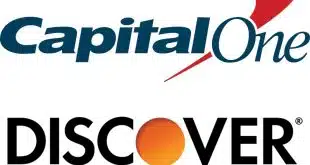Security and convenience-conscious consumers wielding smart phones may one day have a safer and easier way to get cash from ATMs.
ATM maker Diebold Inc. is testing a cash-dispensing-only ATM that relies on a mobile wallet to authenticate the consumer, eschewing a PIN pad and card reader. The ATM, now in test at the Diebold Federal Credit Union, which is unaffiliated with North Canton, Ohio-based Diebold, and at locations belonging to Wintrust Financial Corp., Rosemont, Ill., and City National Bank, Los Angeles.
A transaction works in one of two ways. The first is akin to the current method of walking up to an ATM and making cash withdrawals. In this scenario, the consumer presses a button for mobile cash, says Devon Watson, Diebold vice president of new business and solution incubation. That sends a signal to servers at Boston-based Paydiant Inc., which provides the mobile wallet consumers use on their smart phones, to present a Quick Response (QR) code on the ATM’s display.
The consumer then taps the mobile-wallet app on his smart phone and enters a passcode. Paydiant runs a verification process in the background that includes a check to determine if the device is the same one used to set up the account, Watson says. “Now, we have authentication,” Watson says, using the verified device and the bit of knowledge—the passcode—known by the consumer. The consumer then scans the QR code with the mobile wallet and presses a button in the app to tell the machine to dispense the cash. Receipts are stored in the app or delivered via email.
The other way to use the mobile wallet to get cash is to pre-stage the transaction, which means setting up the withdrawal prior to arrival at the ATM. Consumers select which account to use and the withdrawal amount beforehand. Processor Fidelity National Information Services Inc. (FIS) provides the ATM transaction processing for the test service.
A transaction could take place in less than 10 seconds, Watson says. He would not provide a time comparison for a conventional card-based withdrawal.
A growing generation of consumers accustomed to always-online Internet access spurred the test machine, Watson says. “The reason we really like mobile cash is the sheer volume of digital transactions is increasing,” he says. That growth means more transactions are going to originate on mobile devices, he says.
A smart phone-based ATM transaction also provides additional security over a card-based one, he says. Because a card is never used, there is no skimming device criminals could place to try to capture the sensitive card data. The service also eliminates shoulder surfing, the practice of overlooking a consumer’s shoulder at the ATM to spy on his PIN number.
A convenience factor also plays into the scheme, especially for consumers who rely on their smart phones for many functions.
Ultimately, any Diebold ATMs equipped with this mobile cash capability also would have PIN pads and card readers, Watson says. “It’s much more compelling to support regular card transactions and software-enable things like Paydiant mobile cash,” he says. Offering a commercial version also depends on how strongly Diebold clients want it. “It’s all possible today,” Watson says. “The question is how does it fit into the ecosystem and the rest of the world.”
The fit may take some time to find, suggests ATM industry expert Sam M. Ditzion, chief executive of payments industry consulting firm Tremont Capital Group, Boston.
“Diebold’s innovation is a creative solution to access cash using both mobile technology and an ATM,” Ditzion says. “While more convenient in certain cases, such as withdrawing cash without having a debit card present, this particular [ATM] does not appear to be otherwise incrementally more convenient, faster or better than a traditional ATM transaction. It’s important for all ATM manufacturers to continue to think creatively and push innovation so that ATMs evolve along with changing payments preferences.”
Financial institutions offering a mobile cash withdrawal-capable ATM may find it complements their efforts to present a unified service to consumers regardless of how consumers choose to interact with the company, says David Albertazzi, senior analyst at Boston-based consulting firm Aite Group LLC. Dubbed omni-channel, the approach could enable a consumer to begin a banking activity on his smart phone and conclude at a branch, or an ATM, as in this case.
“Financial institutions have been looking at how to create the customer experience that deals with consumers who may interact in many different ways,” Albertazzi says. “With the phone present all of the time, this concept should resonate well.”
He also says that an ATM offering just a mobile cash option is not a good idea. A percentage of consumers will use this capability, but many will not, he says.





